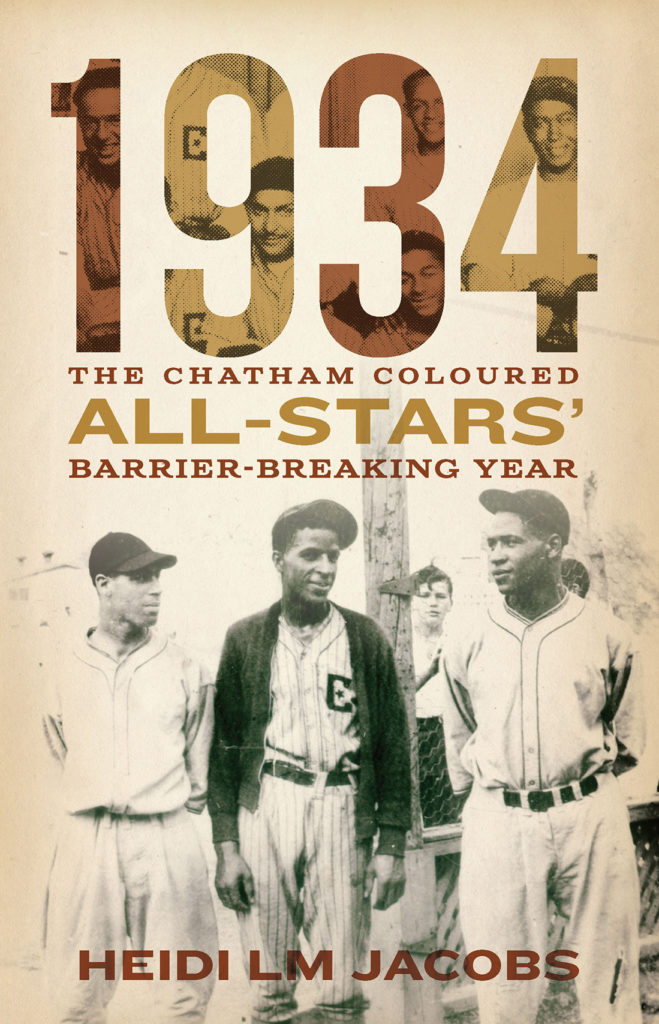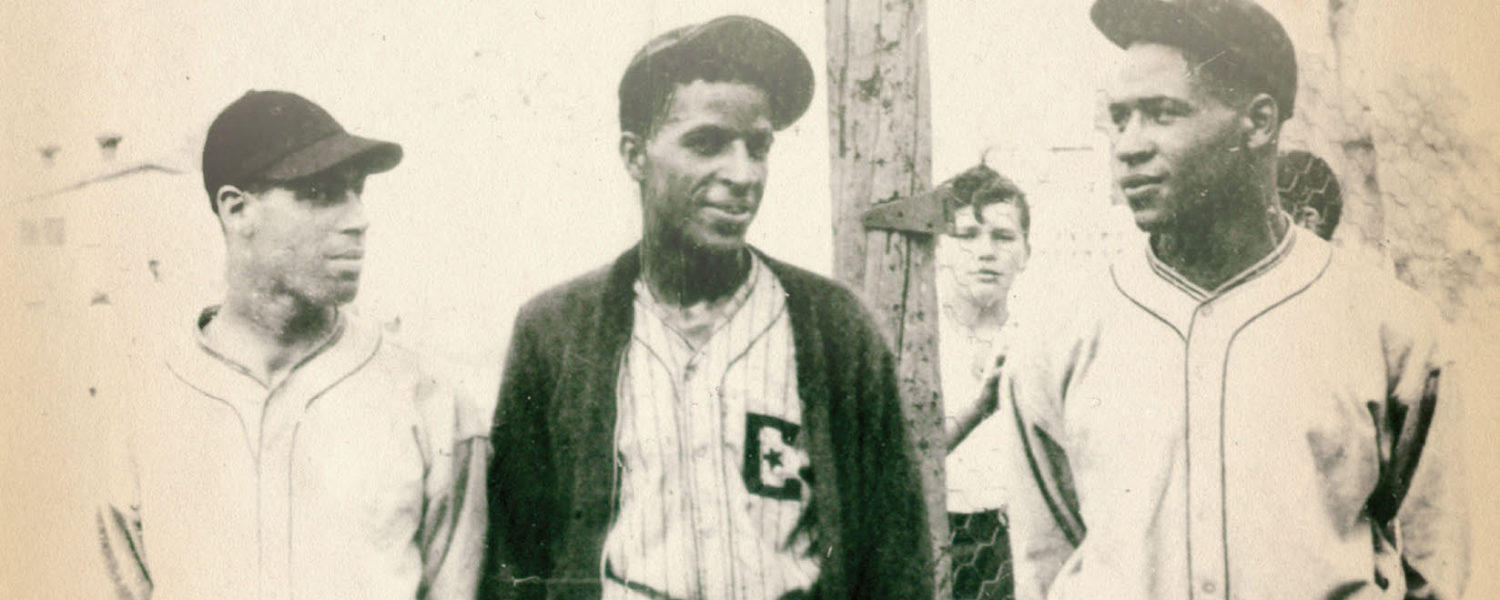Dr. Heidi LM Jacobs Talks About
One of The Most Important Years In Baseball
Story by Ryan Percy
Photography by Jolie Inthavong
It all started with a family scrapbook. The local history of one family exploding into a near decade long dig through the history of Chatham to bring forth a retelling of one of the most influential seasons of baseball.
One of the most iconic moments in the history and politics of baseball was April 15, 1947, when Jackie Robinson stepped out onto the field as the first African American player since the 1880’s to be a part of the major leagues.
While Robinson is credited with breaking through the colour barrier of the sport on an international scale there are still the stories of teams who smashed through it earlier in their own way.

“I got an email from my colleague in the History Department, Dr Miriam Wright,” says Dr. Heidi LM Jacobs, author of 1934: The Chatham Coloured All-Stars’ Barrier-Breaking Year, “she said she met a woman who had scrap books for her father-in-law Wilfred ‘Boomer’ Harding. He was a baseball player, a hockey player and his baseball team was the first Black team to win the Ontario Baseball Amateur Association Championship and she would like us to help her make a website.”
Working with the Harding family and the Chatham Sports Hall of Fame, they received a grant from the Ontario Trillium Foundation. Jacobs, Wright and fellow teammate Dave Johnston were able to synthesize multiple scrapbooks of newspaper clippings, photos and records into the website Breaking the Colour Barrier.
However, this was not the end of the itch: the story had started in Jacobs’ brain, there was still the opportunity to deliver more. It was off brand for the type of work she had done in the past.
“The book seems a very strange place for me to end up, I have a PhD in 19th century women’s literature,” Jacobs says with a bit of a laugh. “But I realized so much of my doctoral research was about finding stories that people had forgotten, great missing voices from history.”
The story of the Chatham Coloured All-Stars is a very localized one. If you were to take the drive to Chatham, especially the community around Stirling Park, you would meet people who knew the story of the team. But the further out you go the less likely you were to meet anyone who knew.
“When we launched the website we did an event for Black History Month in Windsor,” Jacobs says of the amount of people who knew about the team. “Maybe four hands went up out of 50 or 60. All those people were from Chatham. Even down in Windsor people didn’t really know about this story. Let alone Ontario. Let alone Canada.”
The fact that it was such an interesting and important piece of history hooked Jacobs and drove her onward to continue working on the book.
The book has been a process, starting with research in 2015 it has grown from the roots of oral tradition and familial scrapbooking into a narrative that follows the team through probably one of the most important seasons of baseball in history.
Reading through the book, 1934: The Chatham Coloured All-Stars’ Barrier-Breaking Year it feels almost mythical, like an urban legend made manifest in your hands, bringing to life a story that would make you think you were watching a baseball movie.

But this actually happened. These men could perhaps have played Major League Baseball had the colour of their skin not closed doors during their generation.
If the world had been different and not segregated as it was, we may have had Wilfred “Boomer” Harding, Earl “Flat” Chase, Kingsley Terrell and others as role models to youngsters the world over dreaming of baseball greatness instead of just Chatham.
The men who made up the Chatham Coloured All-Stars faced adversity both on and off the field. From racial slurs being hurled at them to even being run out of town after defeating a white home team.
Through Jacobs’ excellent prose, you follow these men as they fight their way to the top to be crowned champions. But what is more important than simply the story of an amazing baseball season is what it leads to: breaking the colour barrier in Chatham. Not just for sports, but in every walk of life.
“I think a lot of times Canadians think ‘oh we didn’t have racism, it wasn’t the same as the US,’” Jacobs says of the adversity the team faced. “We definitely had our own paths to it. In interviews in the 1980’s, these memories still brought tears to these men’s eyes. It had a big impact on them.”
The championship made an impact, helping to strengthen the communal bonds in Chatham between the white and Black neighbourhoods. Not long after Boomer Harding became Chatham’s first Black postman, Andy Harding became Chatham’s first Black police officer and Ken Milburn became Chatham’s first Black firefighter.
While Boomer Harding may be the focus of the scrapbooks, he is not the only important historical character. Earl ‘Flat’ Chase, Kingsley Terrell, Ross and Ben Talbot and the rest of the team each have their own important stories and moments in the season.
Jacobs’ interest is in highlighting and preserving the likely to be forgotten history of a place.
“Canada has a rich, deep history,” Jacobs says of what drove her to write this book. “The All-Stars are a fantastic story, but I guarantee you there’s 20, 30, 40 other stories that are equally interesting and important for people to discover. I hope this work makes us look at our history differently. But I also hope anyone who reads it takes it as an invitation for others to look for those missing gaps and stories.”
Regardless of your interest in baseball 1934: The Chatham Coloured All-Stars’ Barrier-Breaking Year is worth the read as a look into our nation’s not-so-distant past and how we have worked towards removing racial barriers, so all Canadians are treated equal.
If you are interested in a piece of local history, you can purchase a copy of the book directly from Biblioasis Press or all other major book retailers. Royalties from the sale of 1934: The Chatham Coloured All-Stars’ Barrier-Breaking Year will go to support the The Chatham-Kent Black Historical Society.




Add comment